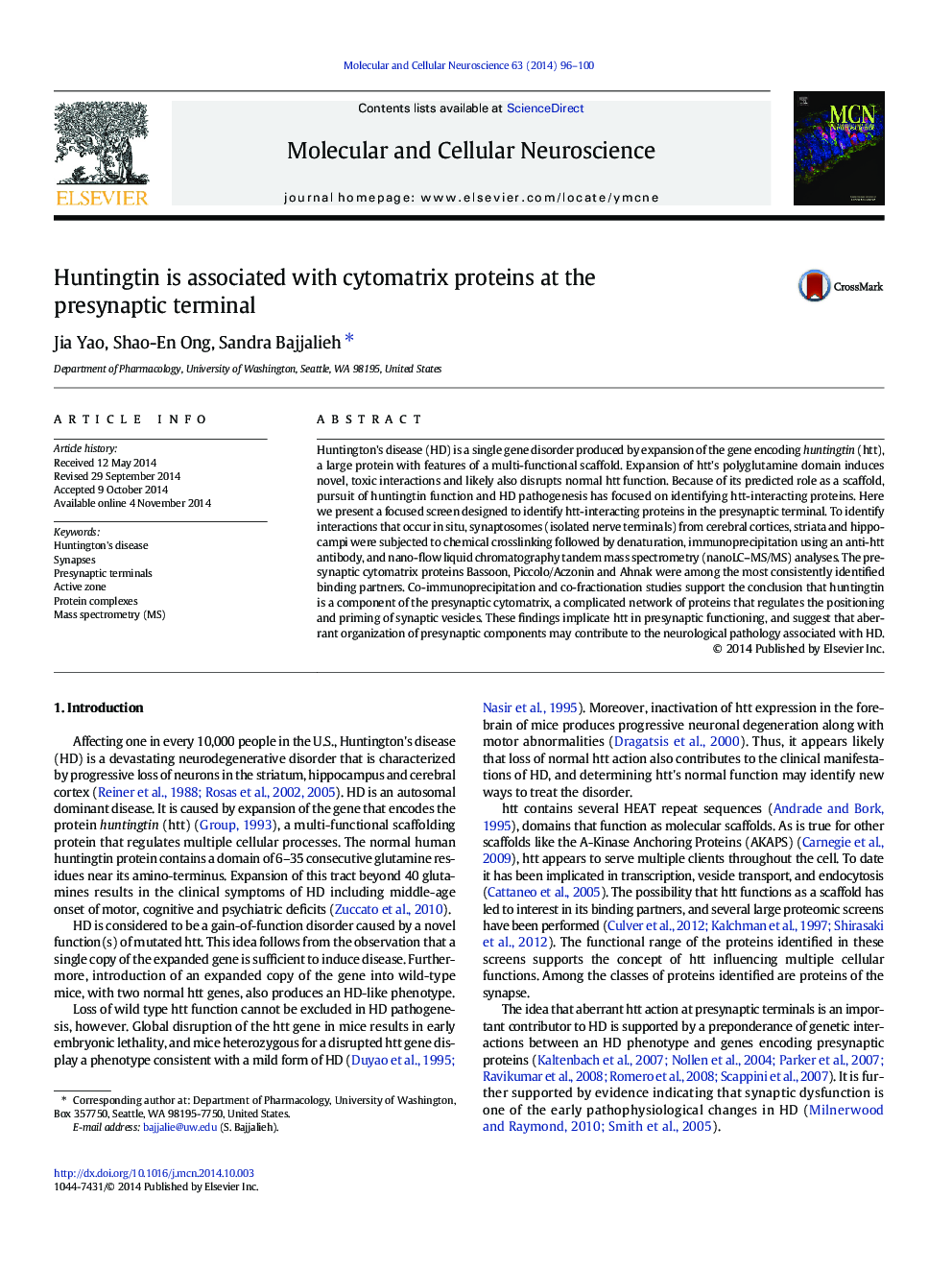| Article ID | Journal | Published Year | Pages | File Type |
|---|---|---|---|---|
| 2198462 | Molecular and Cellular Neuroscience | 2014 | 5 Pages |
•The protein htt is present in brain presynaptic terminals isolated from cortex and striatum.•A focused proteomic screen was conducted to identify htt-associated proteins in presynaptic terminals.•htt is associated with cytomatrix proteins, suggesting it is a component of the presynaptic cytomatrix.
Huntington's disease (HD) is a single gene disorder produced by expansion of the gene encoding huntingtin (htt), a large protein with features of a multi-functional scaffold. Expansion of htt's polyglutamine domain induces novel, toxic interactions and likely also disrupts normal htt function. Because of its predicted role as a scaffold, pursuit of huntingtin function and HD pathogenesis has focused on identifying htt-interacting proteins. Here we present a focused screen designed to identify htt-interacting proteins in the presynaptic terminal. To identify interactions that occur in situ, synaptosomes (isolated nerve terminals) from cerebral cortices, striata and hippocampi were subjected to chemical crosslinking followed by denaturation, immunoprecipitation using an anti-htt antibody, and nano-flow liquid chromatography tandem mass spectrometry (nanoLC–MS/MS) analyses. The presynaptic cytomatrix proteins Bassoon, Piccolo/Aczonin and Ahnak were among the most consistently identified binding partners. Co-immunoprecipitation and co-fractionation studies support the conclusion that huntingtin is a component of the presynaptic cytomatrix, a complicated network of proteins that regulates the positioning and priming of synaptic vesicles. These findings implicate htt in presynaptic functioning, and suggest that aberrant organization of presynaptic components may contribute to the neurological pathology associated with HD.
